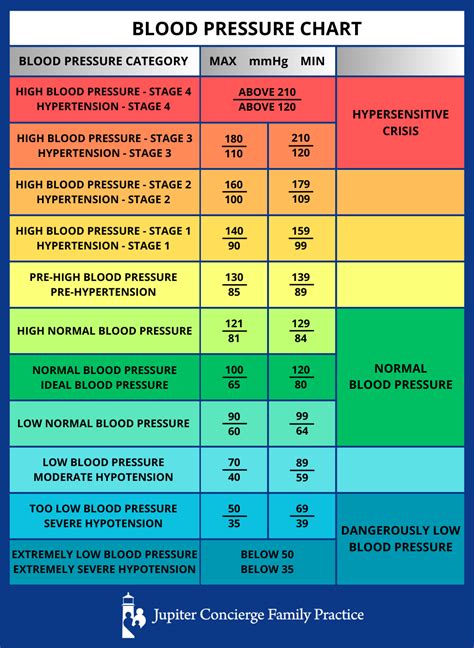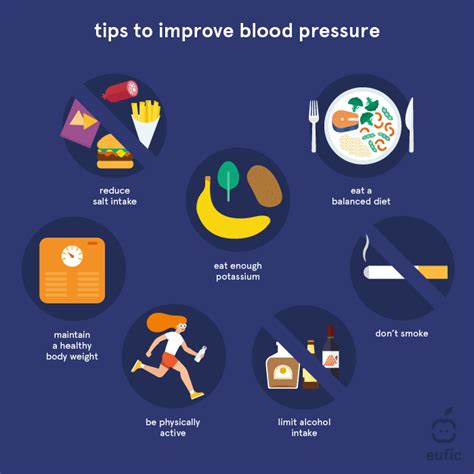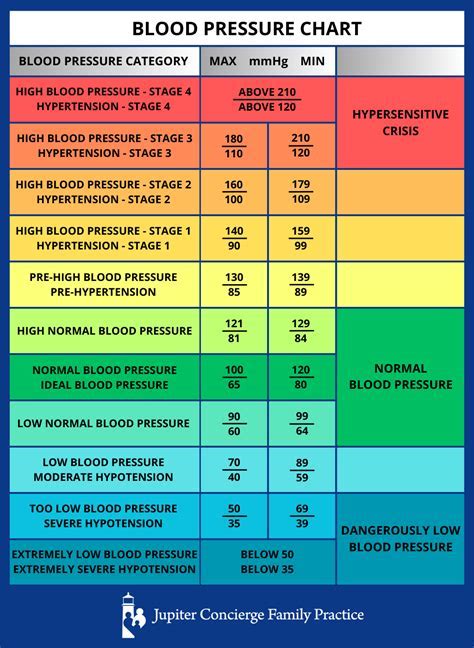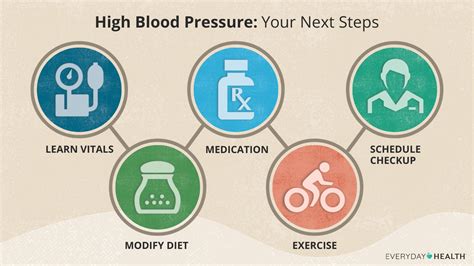Intro
Learn about healthy blood pressure, its importance, and management through lifestyle changes, diet, and exercise, to reduce hypertension risks and promote cardiovascular well-being.
Maintaining healthy blood pressure is crucial for overall well-being, as it plays a vital role in ensuring the proper functioning of the body's organs and systems. Blood pressure is the force exerted by blood against the walls of blood vessels, and it is measured in millimeters of mercury (mmHg). The American Heart Association recommends that adults should have a blood pressure reading of less than 120/80 mmHg. However, many individuals struggle with high blood pressure, also known as hypertension, which can lead to severe health complications, including heart disease, stroke, and kidney damage. In this article, we will delve into the world of healthy blood pressure, exploring its importance, benefits, and ways to maintain it.
The importance of healthy blood pressure cannot be overstated. When blood pressure is within a healthy range, it ensures that the body's organs and tissues receive the necessary oxygen and nutrients to function properly. Additionally, healthy blood pressure reduces the risk of developing chronic diseases, such as heart failure, coronary artery disease, and kidney disease. Furthermore, maintaining healthy blood pressure can also improve cognitive function, reduce the risk of dementia, and enhance overall quality of life. With the increasing prevalence of hypertension worldwide, it is essential to understand the factors that contribute to healthy blood pressure and take proactive steps to maintain it.
Understanding the factors that influence blood pressure is crucial for maintaining healthy blood pressure. Lifestyle factors, such as diet, physical activity, stress levels, and sleep quality, all play a significant role in determining blood pressure. For instance, a diet high in sodium, saturated fats, and added sugars can increase blood pressure, while a diet rich in fruits, vegetables, whole grains, and lean proteins can help lower it. Regular physical activity, such as walking, jogging, or swimming, can also help reduce blood pressure, while chronic stress and poor sleep quality can exacerbate it. By making informed lifestyle choices, individuals can take control of their blood pressure and reduce their risk of developing hypertension.
What is Healthy Blood Pressure?

Benefits of Healthy Blood Pressure
The benefits of healthy blood pressure are numerous and well-documented. Some of the most significant advantages of maintaining healthy blood pressure include: * Reduced risk of heart disease and stroke * Lower risk of kidney disease and kidney failure * Improved cognitive function and reduced risk of dementia * Enhanced overall quality of life * Reduced risk of vision loss and blindness * Lower risk of peripheral artery disease and peripheral neuropathy By maintaining healthy blood pressure, individuals can significantly reduce their risk of developing these chronic diseases and improve their overall health and well-being.How to Maintain Healthy Blood Pressure

Lifestyle Modifications for Healthy Blood Pressure
Lifestyle modifications play a critical role in maintaining healthy blood pressure. Some of the most effective lifestyle modifications include: * Increasing physical activity: Regular physical activity can help lower blood pressure and reduce the risk of chronic diseases. * Reducing sodium intake: Consuming too much sodium can increase blood pressure, so it is essential to limit sodium intake to less than 2,300 milligrams per day. * Increasing potassium intake: Potassium can help lower blood pressure by balancing out the effects of sodium in the body. * Getting enough sleep: Chronic sleep deprivation can increase blood pressure, so it is essential to get at least 7-8 hours of sleep per night. * Practicing stress-reducing techniques: Chronic stress can increase blood pressure, so it is essential to practice stress-reducing techniques, such as meditation or deep breathing.Monitoring Blood Pressure

Understanding Blood Pressure Readings
Understanding blood pressure readings is essential for maintaining healthy blood pressure. Blood pressure readings are typically expressed as two numbers, with the top number representing systolic pressure and the bottom number representing diastolic pressure. For example, a blood pressure reading of 120/80 mmHg indicates a systolic pressure of 120 mmHg and a diastolic pressure of 80 mmHg. By understanding blood pressure readings, individuals can take control of their blood pressure and make informed decisions about their health.The Role of Medication in Maintaining Healthy Blood Pressure

Working with a Healthcare Provider
Working with a healthcare provider is essential for maintaining healthy blood pressure. A healthcare provider can help individuals develop a personalized plan for maintaining healthy blood pressure, which may include lifestyle modifications, medication, or a combination of both. By working with a healthcare provider, individuals can take control of their blood pressure and reduce their risk of developing chronic diseases.Conclusion and Next Steps

We invite you to share your thoughts and experiences with maintaining healthy blood pressure in the comments section below. Your feedback and insights can help others take control of their blood pressure and improve their overall health and well-being. Additionally, please share this article with friends and family who may benefit from learning more about healthy blood pressure.
What is the ideal blood pressure range?
+The ideal blood pressure range is less than 120/80 mmHg.
How often should I check my blood pressure?
+You should check your blood pressure at least once a year, or as recommended by your healthcare provider.
Can lifestyle modifications alone lower blood pressure?
+Yes, lifestyle modifications, such as increasing physical activity and reducing sodium intake, can help lower blood pressure.
What are the risks of untreated high blood pressure?
+Untreated high blood pressure can increase the risk of heart disease, stroke, kidney disease, and other chronic conditions.
Can medication alone control high blood pressure?
+No, medication should be used in combination with lifestyle modifications to control high blood pressure.
